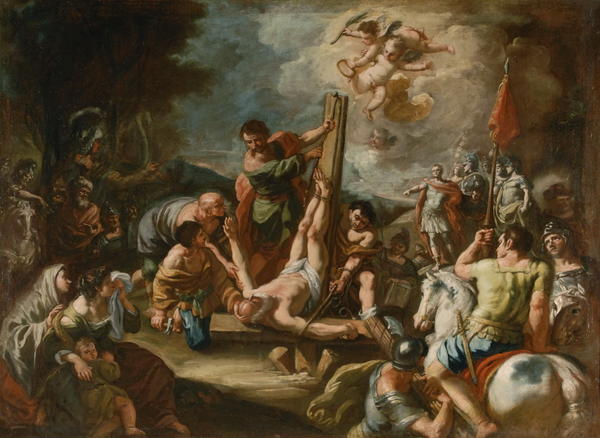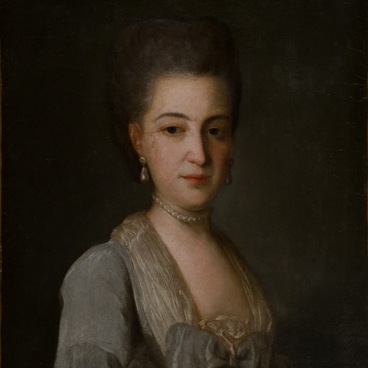The Neapolitan art school is one of the leading European painting schools of the early 18th century. It was here that the style of realism developed, founded by the Spanish artist Jusepe de Ribera. For all his life he worked in Naples, thus securing Naples the title of the City of Arts.
Crucifixion of Peter the Apostle
Размер
75,5x102,5 cm
Техника
canvas, oil
Коллекция
Выставка
3
Открыть в приложении#6
In the collection of the Tambov Regional Picture Gallery, the Neapolitan school is represented by the canvas Crucifixion of Peter the Apostle by Francesco Solimena. Today, his paintings are exhibited in the Hermitage and the Louvre, the Metropolitan Museum of Art and the National Gallery in London.
#2
The artist was born in the Italian province of Avellino. He received his first painting lessons from his father, Angelo Solimena. In his green years he also was influenced by the works by Italian masters Mattia Preti and Luca Giordano.
#3
At the age of seventeen, Francesco Solimena moved to Naples, where he began to paint frescoes on religious and mythological subjects, and to try his hand, little by little, in the portrait genre. His first independent work was the design of the Church of Santa Maria Donna Regina.
#4
In his painting The Crucifixion of Peter the Apostle, Francesco Solimena turned to the Evangelical story about the execution of one of the Jesus Christ’s main disciples. According to legend, in the year 64 AD, when Emperor Nero was persecuting Christianity, Peter was crucified upside down on an inverted cross. The Apostle himself chose such a fate, because he considered himself unworthy to die like Jesus. Before his adoption of Christianity, he was a simple fisherman named Simon. Following Christ, he became one of his twelve apostles and accepted the name of Peter. The Lord handed him the keys to the Kingdom of Heaven. Today, Christians revere Peter as the first bishop, the forerunner of the popes.
#5
Solimena’s canvas depicts the place of execution of Peter, the Vatican hill on the banks of the Tiber on the Apennine Peninsula. In the center of the composition, the soldiers are erecting a cross, surrounded by detachments of soldiers and residents of Rome. Angels are soaring in the sky with the symbols of martyrdom, a palm branch and a crown.
#7
The Crucifixion of Peter the Apostle is an example of the late Baroque, which is characterized by the flowery and dynamic style prevailing in the artworks of the Dutch master Peter Paul Rubens and the Italian master Caravaggio. Solimena also used a bright palette and a clear contrast of light and shadow.
Pavel Stroganov purchased the canvas for his collection, following the example of his maternal great-grandfather, statesman Alexander Stroganov. At the beginning of the 18th century, he was one of the first Russian buyers of paintings by Francesco Solimena.
#8
Ministry of Culture of the Russian Federation
читать дальшескрыть
00:00
00:00
1x
Crucifixion of Peter the Apostle
Размер
75,5x102,5 cm
Техника
canvas, oil
Коллекция
Выставка
3
Открыть в приложении
Поделиться



